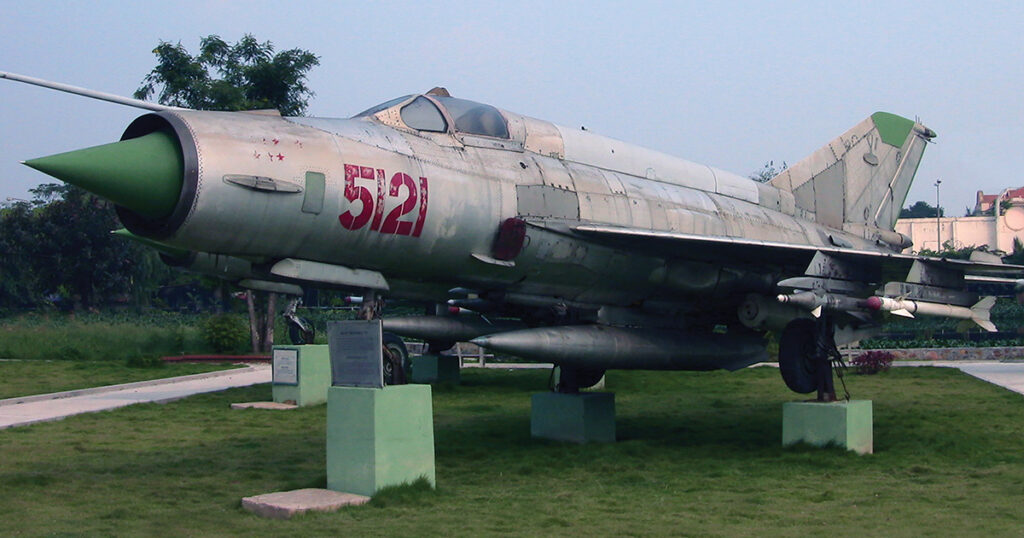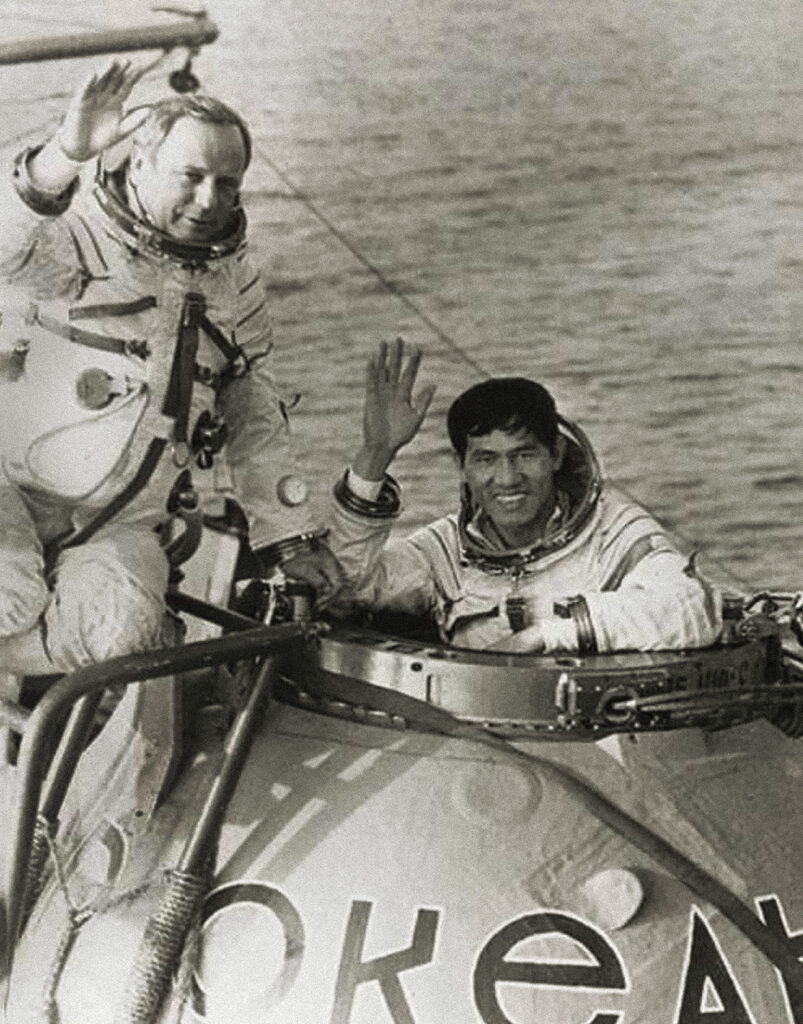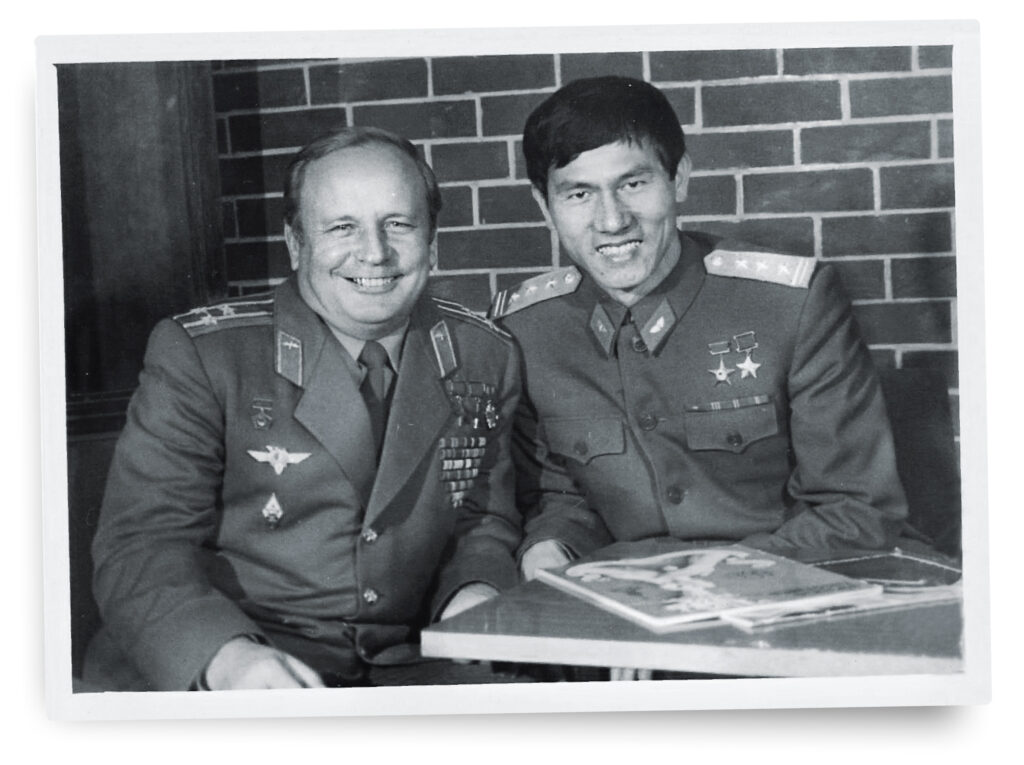
Pham Tuan occupies two special places in Vietnamese history books—although both distinctions have attracted some controversy as well as fame. He gets credit for being the first Vietnamese fighter pilot to shoot down a Boeing B-52 Stratofortress and with being the first Southeast Asian to reach outer space.
Born in Kien Xuong District of Thai Binh Province on February 14, 1947, Pham Tuan joined the North Vietnamese military in September 1965 as a radar mechanics student and later trained at the Krasnodar flight school in the Soviet Union. Back in Vietnam, he underwent further training, including night flying, in the 910th Air Training Regiment. His first combat assignment was piloting Mikoyan-Gurevich MiG-17 fighters with the 923rd Fighter Regiment in 1969. He switched to MiG-21s with the 921st from 1970 to 1973.
On December 14, 1972, President Richard M. Nixon responded to the North Vietnamese walking out of the Paris peace talks by approving Operation Linebacker II, a renewed bombing offensive intended to force them back to the negotiating table. Although both opposing air arms fought with all they had, the most prominent protagonists in Linebacker II were waves of B-52s that dropped huge bomb loads from high altitude, opposed by batteries of S-75 Dvina (NATO codename SA-2 Guideline) surface-to-air missiles (SAMs). The North Vietnamese began exhausting their missile stocks over the next two weeks, however, so on December 26 their air force committed 12 MiG-21 pilots, eight of whom were trained in night fighting, to take a more active role in defense of the beleaguered SAM sites by intercepting the B-52s.

On the night of December 27-28, Pham Tuan, flying MiG-21MF bort number 5121, took off from Hanoi’s Noi Bai airfield and was directed by ground control intercept (GCI) to attack three B-52s reported over Moc Chao. He spotted the targets at an altitude of 23,000 feet, accelerated to 746 mph and climbed above the bombers to 33,000 feet. As he closed on the B-52s, GCI instructed, “You have permission to fire twice, then get away quickly,” since American fighters were approaching. “I launched two [K-13] heat-seeking missiles from a distance of 2 kilometers,” he reported. “Big flames were visible around the second B-52 as I turned sharply to the left and descended to 2,000 meters before landing at Yen Bai.”
Pham Tuan received credit for the first successful B-52 interception by a fighter plane, for which he was awarded the Vietnam People’s Armed Forces medal on September 3, 1973. He claimed to have last seen his quarry burning at the border between Hoa Binh and Vinh Phouc provinces and that the entire crew were killed. The United States Air Force lost two bombers that night. The six crewmen of B-52D 56-0599 of the 77th Squadron, 28th Bombardment Wing, 307th Strategic Wing, operating from U-Tapao, Thailand, bailed out and were rescued, and later testified that their plane had been fatally damaged by the last of 15 SAMs launched at them. B-52D 56-0605 of the 7th Bombardment Wing, attached to the 43rd Strategic Wing from Andersen Air Force Base, Guam, was also lost that night, with two men killed and four taken prisoner. All four survivors subsequently claimed that they, too, had been SAM victims. Vietnamese aviation historians, however, now credit Pham Tuan with the latter B-52.
After the war Pham Tuan married and had two children, but he remained in the air force. Meanwhile, in April 1967, the Soviet Union initiated an Intercosmos program, opening up crew positions on its spacecraft to non-Soviet personnel. One of the three Vietnamese pilots sent to the Gagarin Air Force Academy for cosmonaut training in 1977 was disqualified due to health problems and on April 1, 1979, Pham Tuan was selected to replace him for the sixth international flight. On July 23, 1980, he and Soviet cosmonaut Viktor Vasilyevich Gorbatko launched from Baikonur Cosmodrome aboard Soyuz 37.

Although there’s no doubt that Pham Tuan reached space, a popular joke among Vietnamese referred to him as “the hitchhiker,” because he left all the “driving” to his Soviet hosts. Still, there were indications that he was not just along for the ride. Three days before takeoff, he was informed that he was to serve as chief cosmonaut aboard Soyuz. Then technical problems arose with the rocket engine. Facing the possibility of an abort before launch, Pham Tuan received orders to shut down all systems, but ground command was able to restore the engine to normal operation and the mission proceeded as planned.
On July 24, Soyuz 37 docked at space station Salyut 6, where among other things Pham Tuan conducted experiments in melting mineral samples in microgravity and with azolla plants as well as photographing Vietnam for mapping purposes. Departing the space station aboard Soyuz 36, he and Gorbatko returned to Earth on July 31, having completed 142 orbits in just under eight days.
Besides the Ho Chi Minh Order and Hero of Labor, on July 31, 1980, Pham Tuan was awarded the Order of Lenin and the Gold Star of a Hero of the Soviet Union. He is one of the few foreigners to receive the USSR’s highest decoration. He rose in rank to lieutenant general and served in the ministry of defense and as a member of the Vietnam National Assembly before retiring in 2007. The MiG-21MF 5121, in which he scored his single, controversial aerial victory, is on display outside the Vietnam Military History Museum in Hanoi.